Petty criminals also had their social gatherings and were a colorful subset of Berlin’s Kietz . Some 70 Dielen , mostly hidden away in Berlin North cellars, catered to these declassé night creatures. Urban folklorists and journalists looking for a surefire Schnauze item followed the stumblebums to their low haunts and recorded their fascinating conversations and downtime recreations. Besides, unlike their organized colleagues, these semi-professionals stole, traded, drank, played, fought, and obscenely gossiped in the open. One plucky travel agency advertised post-midnight tours of criminal clubs in “darkest Berlin.” German and British tourists too hip for the Topp and Eldorado excursions must have been the intended clientele.
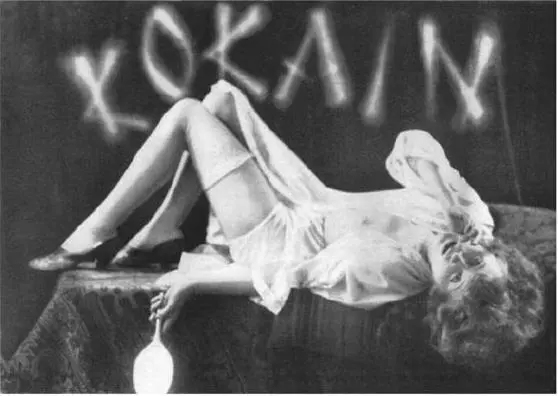
Mager, The Complete Vice
Architecturally the Kaschemmen could not have been easy on the eye. Dimly lit and crammed with mismatched junk furniture, the places seemed fit only for the Screens , assorted riff-raff, and their Brides who trafficked in Sohre there. In the bottom-grade “Café Dalles” the tin cutlery resting on the tables was attached to long iron-chains, which in turn were stapled to the restaurant walls, preventing most utensil theft. When a customer exited and the table setting needed a fresh-up, one of the Dalles’ employees hoisted a huge vat filled with greasy broth and rinsed the used spoons and plates in it. None of the regulars complained.
A few of the criminal Dielen had more inviting atmospheres. The “Sing-Sing” was constructed like a prison dining hall and featured mock executions in a wooden electric chair, a punishing apparatus which only existed in the New World. Other dives provided music and cabaret entertainments. Mostly, it was the denizens of Berlin’s underworld that attracted outsiders. At the “Blue Stocking,” one could meet such Kietz luminaries as “Boot-Job Else,” “Hedwig with a Cold Hand,” “Snot-Faced Adolf,” and “Singer-Franz,” who ranted that he once sang at the Komische Oper.
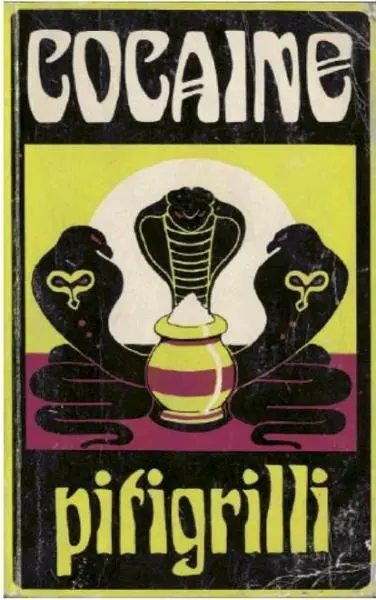
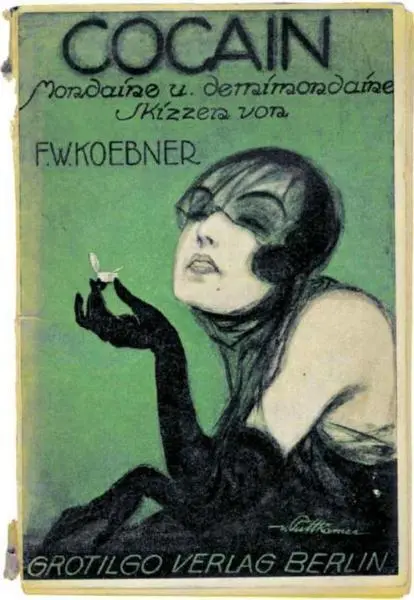
Novels about cocaine addiction
The “Hundegustav Bar” hosted another unlikely Dick Tracy crew. The Beinls included “All-Tits,” “Cocaine-Betty” (to be differentiated from her archrival “CognacBetty”), “Bottom-Girl Ede,” the three Elses (“Dance-Else,” “Jew-Else,” and “Sexy-Else”), two Ernas (“Cement-Erna and “Wacky-Dance Erna”), two Metas (“Puffy-Eyes Meta” and “English-Meta”) and two Trudes (“ Bubikopf -Trude” and “Pockmarked Trude”). The male characters had even more cartoonish monikers: “Big Dick” (or “The Breuslauer”), “Apache-Erich,” three Emils (“Harem-Emil,” “Soldier-Emil, and “Brown-Emil”), “The Anti-Franz,” “Doll-Brained Hermann,” “Jewface,” “Pickles-Julie,” two Karls (“Muttalo-Karl” and “Raven-Hair Karl”), “Long Leo,” “Insect Paul,” two Piepels (“Basher-Piepel” and “Robber-Piepel”), “Madman-Robert,” “Shithead” (everyone’s favorite raconteur), and three Walters (“Halitosis-Walter,” “Palace-Walter,” and “Soldier-Walter”).
The Ringvereine brothers and the barely intelligible street toughs had their time in the sun. Vice Commissionaries with a literary bent and columnists glorified in their rituals and jargonistic babble. The lawbreakers had their own judicial systems and public ceremonies. When a Ringvereine member died, all of Berlin North was treated to a funeral procession that rivaled in complexity and ornateness that of a reigning Balkan monarch. But like the rest of wicked Berlin, it came to an abrupt end. In January 1934, Hitler’s SA-troopers cordoned off whole sections of the city and those found on the old police lists of convicted felons were dispatched to Dachau.■
Whoever stays for any length of time in Berlin hardly knows in the end where he actually came from.
Siegfried Kracauer,
Frankfurter Zeitung , 1932
There was a sensation of doom to be felt in the Berlin streets.
Stephen Spender,
World Within World , 1951
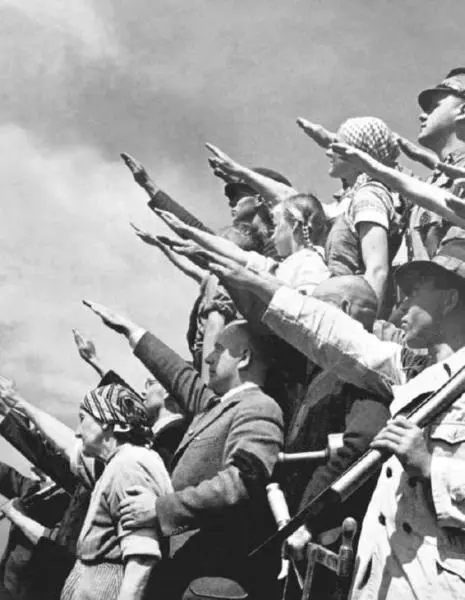
Pay Christian Cartensen, New Germany, 1933
Adolf Hitler was officiallyappointed Reichschancellor on January 30th, 1933. It was virtually the last gambit in a vain scheme by the Nationalist and reactionary leaders to tame and discredit their Nazi opposition. President of the Weimar Republic, the revered 83-year-old Field Marshall Paul von Hindenburg, assured his right-wing partners that Hitler could do little but hysterically seethe and storm without a Nationalist Socialist majority in the Reichstag. But on February 27th, the Reichstag itself was destroyed by arson.
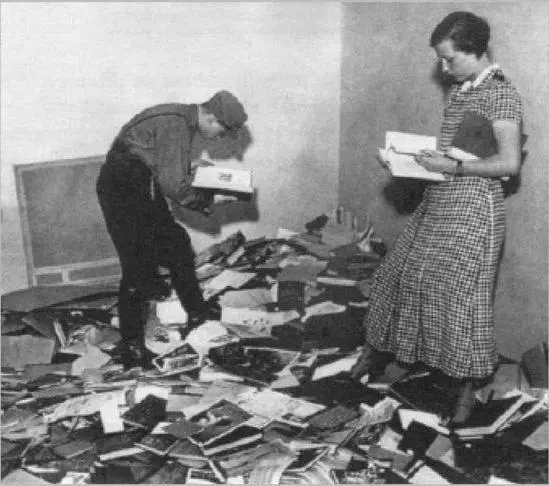
The destruction of Hirschfeld’s Institute, 1933
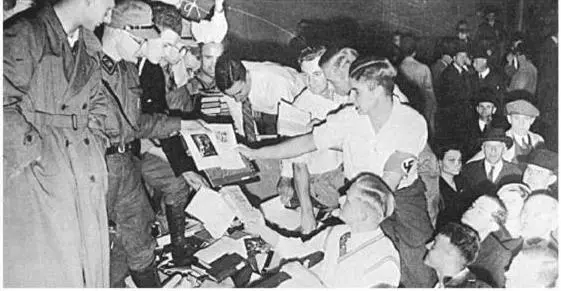
Hitlerjungen leader shows picture of Hirschfeld in book during the destruction of the Institute, 1933
That night the Berlin police seized a Dutch Communist fanatic who confessed to the criminal deed. In order to prevent the so-called Marxist uprising, Hitler demanded from von Hindenburg emergency dictatorial powers. Anti-Nazi members of Hitler’s cabinet—in a spasm of panicked confusion—acquiesced to the Führer’s petition. They knew it would bring an end to Weimar’s constitutional democracy.
So began Hitler’s Third Reich and the path to world catastrophe.
Unfortunately, the facts of the time don’t much support this tempting Puritanical thesis.
Few Germans or foreigners living in Weimar Berlin saw the moral linkage between the city’s tawdry hijinks and the calamitous events of 1933. After all, it was the progressive citizens of Sodom on the Spree who fought the fascist menace with the utmost ferocity. All the political and media tools in their possession, however, could not overcome Nazism’s deep mystical appeal to the distressed farmers of Schleswig-Holstein and other provinces far from the fleshpots of the Friedrichstadt. Hitler’s consolidation of power resulted from a confluence of many unforeseen factors, including the staggering folly of the Communist and central-right opposition parties, who themselves promulgated extremist programs to eradicate Berlin’s conspicuous demi-monde.
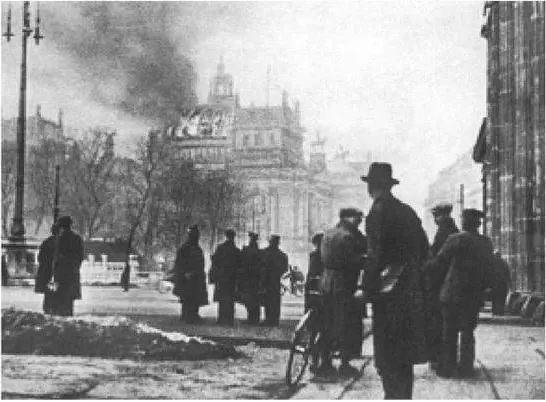
The Reichstag on fire, 1933
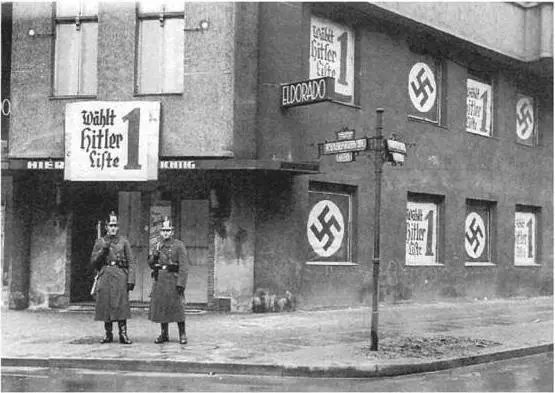
The Eldorado’s transformation into a Nazi headquarters, 1932
Michael Davidson, an old Berlin hand, challenged the conventional postwar wisdom in his erotic memoir of the Thirties, The World, the Flesh and Myself : “There must be people who believe that Hitlerism was a stern reaction to this ‘German decadence,’ or alternately regard the Nazi Party itself as a foul edifice of degeneracy—in either case blaming Germany’s blatant homosexuality for the Hitler tyranny. Both assumptions are false.”
Читать дальше




















